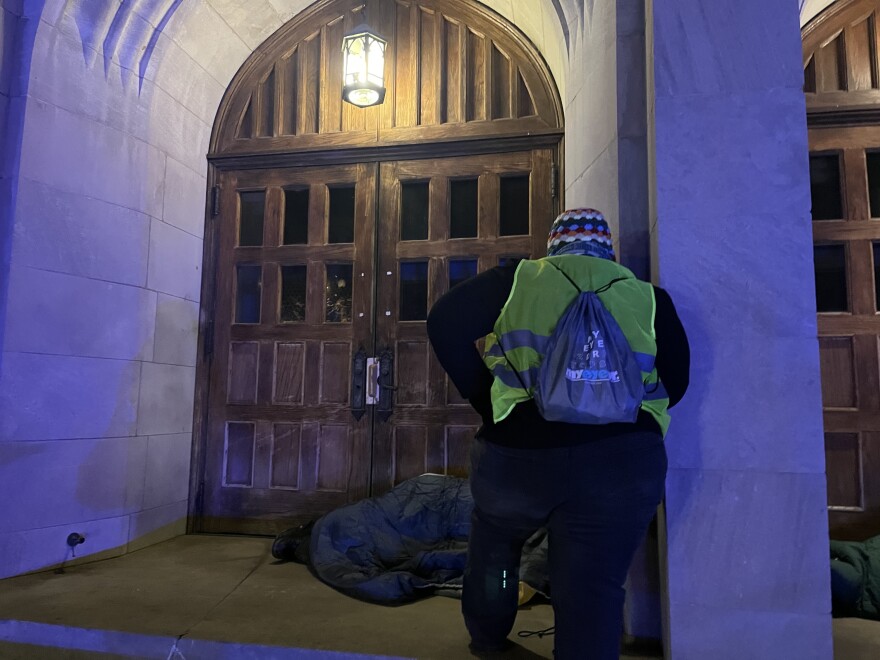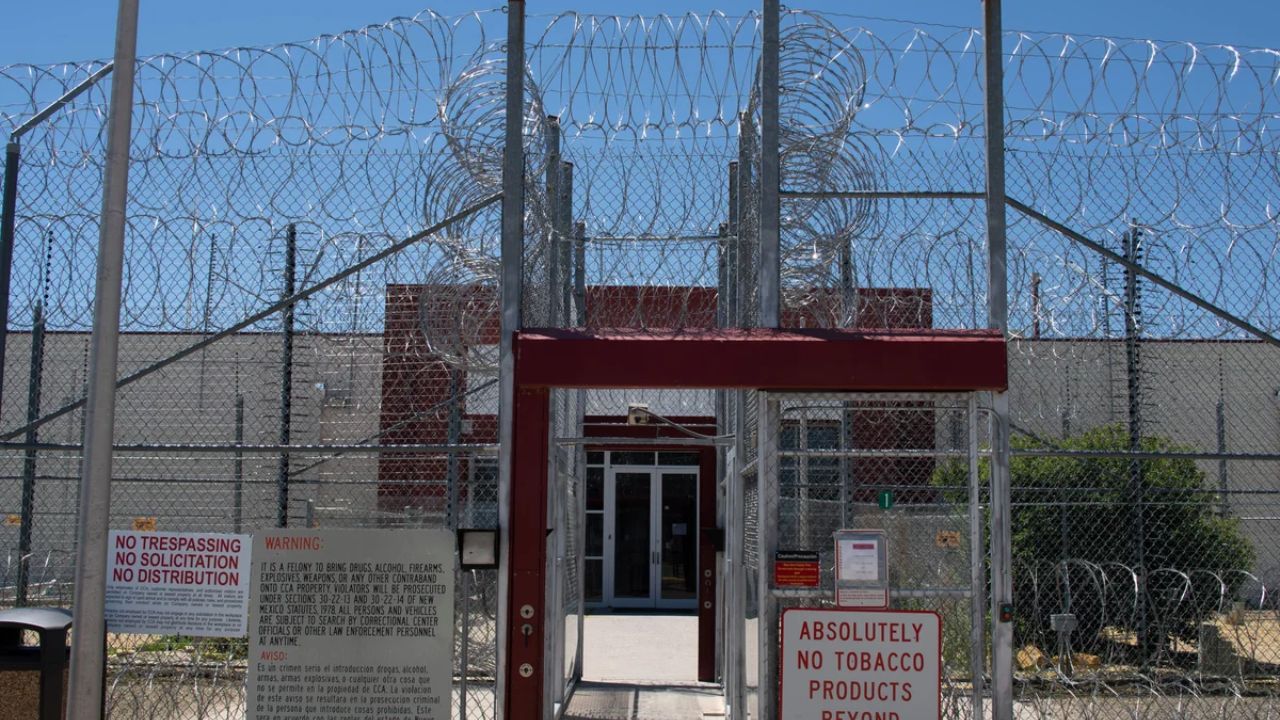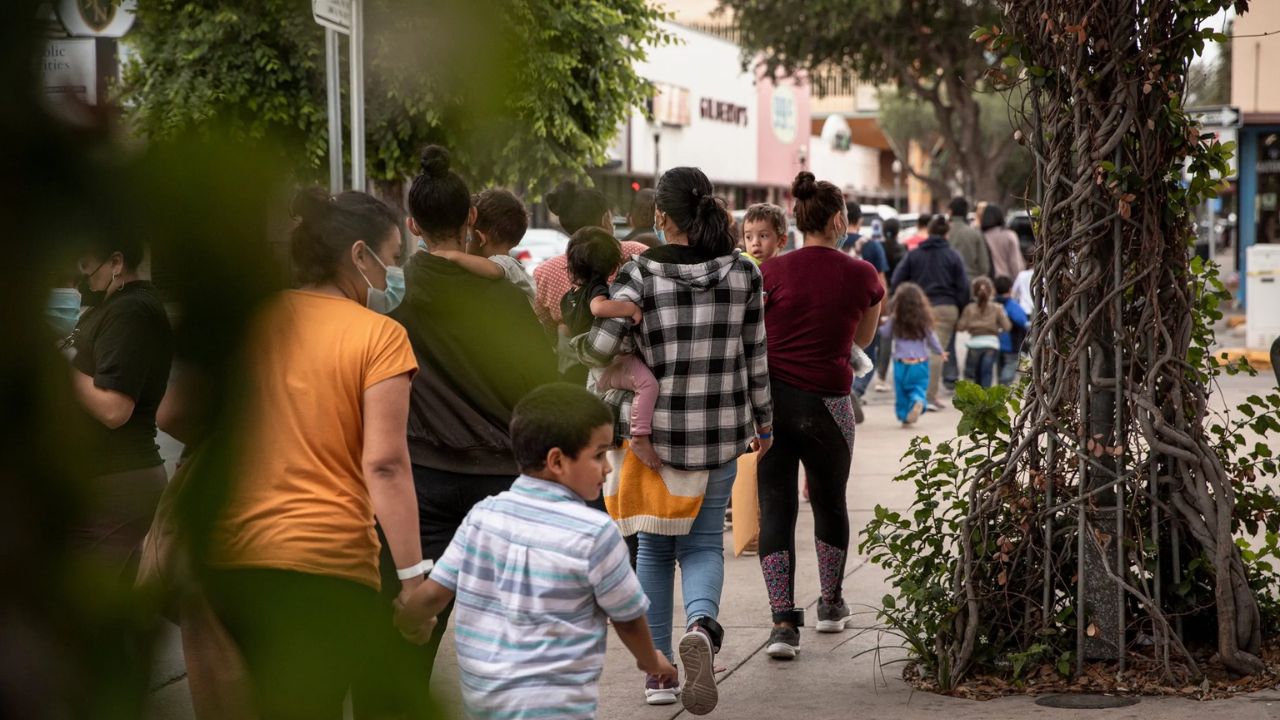More people are homeless currently than they have been since 2010, according to a new Mecklenburg County survey. We interviewed a few of those individuals and reported on the death of a guy who was homeless until his body was discovered in an uptown location last week. Here, WFAE examines the ways in which shelter and county programs are addressing this intricate problem.
On a recent early morning, a train rolled past First Ward Park uptown. Fletcher sat with his suitcase next to him on a bench beneath a group of trees. His sitting satisfied him.
“If they can’t get this spot, a lot of people will literally get mad,” Fletcher added. due to the fact that it produces a lot of shade and wind. However, you might have to catch a bench if you’re not fast enough. Not very nice.
Due to his circumstances, WFAE is only using Fletcher’s last name. That bench was where the 54-year-old spent the night before. He uses a cane to get around.
“I’m disabled,” Fletcher stated. “I have been unable to work after undergoing two hip replacement procedures.
According to Fletcher, he used to work in construction but now finds it difficult to pay his rent.
According to Fletcher, it’s almost like a new age has begun. Many people end up living on the streets or in their cars if they are unable to pay their rent, which is the case for many people.
This year’s county’s Point-in-Time Count study revealed that. There are 444 individuals living outside, which is the most since 2010 and 60 more than the previous year.
Not everyone wants to stay in a shelter, according to Fletcher, who was sitting on the bench with his hat and sunglasses on to shield himself from the sun. He admitted that he finds it awkward to sleep and take a shower among transsexual persons at the shelter.
There is a great deal of fighting in those shelters. According to Fletcher, it leads to disarray, issues, and divisions. “Hey, would you like the facts? I’m being honest with you.
In the county poll, about half of the outdoor residents responded to questions about their identities. Out of the 207 individuals, 17 self-identified as LGBTQ+.
According to Fletcher, there are further reasons why some individuals would rather sleep outside than in a shelter, such as when young people target elderly people in an attempt to take valuables like watches and wallets while they are asleep.
When asked what he would like to see done with county funding meant to help the homeless, Fletcher responded, “Open up facilities so we can see with our own eyes.” According to Fletcher, they speak a fine game but never deliver. “They never constructed or converted warehouses into dwelling spaces where people could sleep.
Mecklenburg County has committed about $150 million to tackling homelessness and supplying affordable homes since the fiscal year 2022. This covers money for rental aid, legal help to prevent evictions, shelter programs, and more. The city contributes a portion of the money, and the federal government provided $65 million through the American Rescue Plan Act.
In 2022, the county spent around $15 million using federal funding to buy a hotel. Following improvements, Forest Point Place in Charlotte now provides homes for homeless individuals aged 55 and over who also have long-term medical issues. More than 90 individuals can now stay at the hotel. In addition to managing the facility, Roof Above helps tenants with case management and drug use intervention.
Karen Pelletier, the county’s director of the Housing Innovation and Stabilization Services Division, stated, “I can understand and validate the feelings that I think we are spending this much, and I can drive down the streets and see people living outside, and that is sad and awful.” Additionally, it is a result of low earnings, increased rents, and the intricacy of all these other systemic issues.
She identified system failures as individuals slipping through the cracks of the criminal justice system, mental health system, and educational programs. Pelletier added that making room in shelters is a top concern for the county.
“We spend the majority of our budget on housing because it’s about how we’re moving people out of homelessness,” Pelletier added, referring to both our housing and homelessness budgets.
Through a program dubbed A Home for All, the county, city, and United Way of Greater Charlotte have joined forces to purchase a hotel and turn it into a non-congregate shelter.
According to Pelletier, that would benefit persons who would not feel comfortable entering a huge gathering place because of serious and ongoing mental health conditions or active addiction.
According to Pelletier, they intend to serve a minimum of 60 individuals. Kaedon Grinnell yelled “Lady on the floor” to alert the men at the Roof Above men’s shelter that he was coming in a group with a woman in it in a shelter facility close to uptown on North Tryon Street.
Grinnell is Roof Above’s principal program officer. He stated that there are 264 beds in the shelter located on North Tryon Street. Due to a lack of availability, Grinnell said it can currently take up to two weeks for someone to get a shelter bed.
He adds that what some people may see as a bunch of homeless people is not the same as what those individuals actually experience.
According to Grinnell, a community is one of the things we observe when a group of individuals join together. Therefore, it can occasionally be difficult to ask people to leave that community and enter a shelter.
Going forward, Roof Above may encounter another obstacle in its efforts to assist individuals and help them leave the streets. The group’s CEO, Liz Clasen-Kelly, said last week that they will be ending their drug rehab program at the end of the month. According to Clasen-Kelly, the group’s program-related temporary housing will continue despite the decision, which is related to operational and budgetary difficulties.
According to Grinnell, its staff members conduct hourly patrols of the shelter halls as part of their safety protocols. Additionally, there are lockers for personal goods and cameras. To make sure no weapons or narcotics enter, people are carefully inspected as they enter and exit the premises.
Regarding shelters that serve certain populations, including individuals with mental health disorders or members of the LGBTQ+ community, he stated: I believe there is a need for specialized shelters; financing must match that need for us to get there. Grinned.
He went on.
Although it’s a more expensive shelter model, I simply believe it to be a far more dynamic and possibly successful one, Grinnell said. “Having several locations is an expensive shelter strategy, but in my view, the advantages exceed the drawbacks. I believe there would be more favorable results.
Grinnell suggests that additional shelters are necessary as a short-term fix. He claims that in order to solve what is a difficult problem for everyone, more affordable housing will eventually be required, along with broad community support and buy-in from all sectors.






